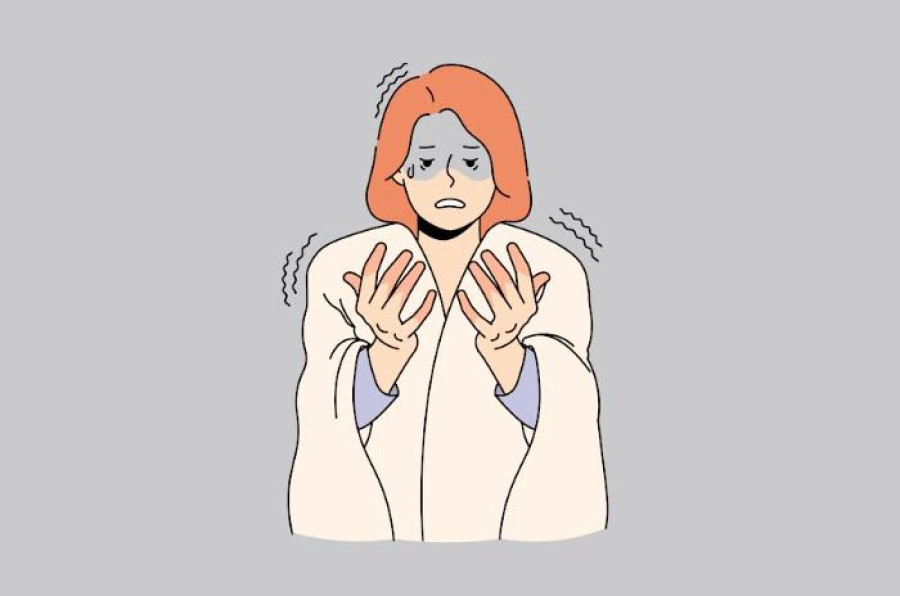Culture & Lifestyle
Keeping frostbite at bay this winter
Dermatologist Vikash Paudel explains the condition’s early signs and prevention methods.
Sanskriti Pokharel
Frostbite is often linked to freezing polar regions, but it can happen even in places with moderate winters, like Kathmandu or Biratnagar. While the temperatures here aren't as extreme, wind, wet weather, or high-altitude trekking can still cause this cold injury. Knowing the risks and how to prevent frostbite can help keep us safe during winter, no matter where we are.
Dr Vikash Paudel, a consultant dermatologist at Patan Hospital, Elite Health Clinic, and Shankhamul Healthcare, explains frostbite, its early signs, and the methods to prevent it.
What is frostbite, and how does it occur?
Frostbite is a cold-induced injury when the skin and its surroundings freeze due to exposure to temperatures below 32°F (0°C). The cold constricts blood vessels in the affected area, reducing blood flow and depriving tissues of oxygen. As time passes, this leads to ice crystal formation in cells, causing damage to the skin and deeper tissues.
Frostbite typically progresses in three stages. Frostnip (mild) is the first stage. Here, initial redness and numbness occur without permanent tissue damage. In the superficial frostbite stage (moderate), skin becomes pale, cold, and hard, sometimes with potential blister formation. Lastly, in the deep frostbite (severe) stage, tissue damage extends below the skin, potentially leading to permanent loss of sensation, gangrene, or amputation.
What parts of the body are most commonly affected by frostbite?
Frostbite most commonly affects the body’s extremities and exposed areas, such as fingers and toes, nose and ears, cheeks, and chin.
Fingers and toes are prone to frostbite due to their distance from the heart and reduced blood flow in cold conditions. The nose and ears have thin skin and limited fat for insulation, leading to frostbite. Cheeks and chins are frequently exposed to cold in winter.
Can frostbite happen in regions with moderate winters like Kathmandu or Biratnagar?
While frostbite is more prevalent in frigid climates, it can also occur in regions with moderate winters, like Kathmandu or Biratnagar. It shows up more rapidly in windy, wet, or high-altitude conditions, as these factors exacerbate heat loss.
People in Kathmandu Valley or Biratnagar may develop frostbite if they spend extended hours outdoors without adequate protection. Moreover, encountering unexpected cold fronts or high winds in moderate climates can lead to frostbite. Some individuals with underlying medical conditions such as peripheral vascular disease (due to poor circulation), Raynaud’s syndrome (Cold triggers excessive constriction of blood vessels), diabetes (impaired nerve function and circulation), hypothyroidism and malnutrition (decreased body heat production and energy reserves) are even at higher risk no matter where they live.
In moderate climates, frostbite risk increases during activities like high-altitude trekking, where temperatures drop significantly, or during prolonged exposure to near-freezing temperatures combined with wind or wet conditions. People who smoke cigarettes are more prone to cold-related damage because tobacco use restricts blood flow.
What age group are more at risk of having frostbite?
Frostbite can affect anyone exposed to freezing temperatures for prolonged periods. Children and teens have a larger surface area relative to their body mass, making them lose heat faster. In older adults (65+), ageing reduces their body’s ability to retain heat, making them more vulnerable to frostbite.
What are the early signs of frostbite?
Early signs of frostbite include a tingling, numbness, or pins-and-needles sensation in the affected area. Skin appears red, pale, or bluish and feels unusually cold. As frostbite becomes more severe, skin becomes hard or waxy.
What are the immediate steps one should take upon noticing frostbite symptoms?
If frostbite symptoms are noticed, gradually submerge the affected area in warm (not hot) water between 98.6°F–102.2°F (37°C–39°C) for 15–30 minutes, which helps restore circulation without causing burns. Wrap the
affected area in sterile gauze to prevent infection and avoid further injury.
However, do not use heaters, fires, or heating pads, as numb skin is vulnerable to burns. Rubbing frostbitten skin can further damage delicate tissues.
Consult a healthcare provider promptly, especially if the frostbite is severe (blisters, blackened skin, or persistent numbness).
What preventive measures can people take to avoid frostbite, especially in areas with mild winters?
To prevent frostbite, it is essential to take several precautions. Dress appropriately using multi-layered clothing, including moisture-wicking base layers, insulating middle layers, and windproof or waterproof outer layers. Protect extremities using gloves, hats or caps, scarves, thick thermal socks, and waterproof boots. Ensure your clothing is not too tight to allow proper blood circulation and keep your clothes dry, as wetness accelerates heat loss.
Stay updated on weather conditions, paying attention to wind chill factors that can make temperatures feel significantly colder. Avoid alcohol, which impairs judgment and heat retention, and nicotine, which restricts blood flow to extremities. Lastly, stay nourished and hydrated, as a well-fed and hydrated body generates heat more effectively, providing better protection against frostbite.




 13.12°C Kathmandu
13.12°C Kathmandu















